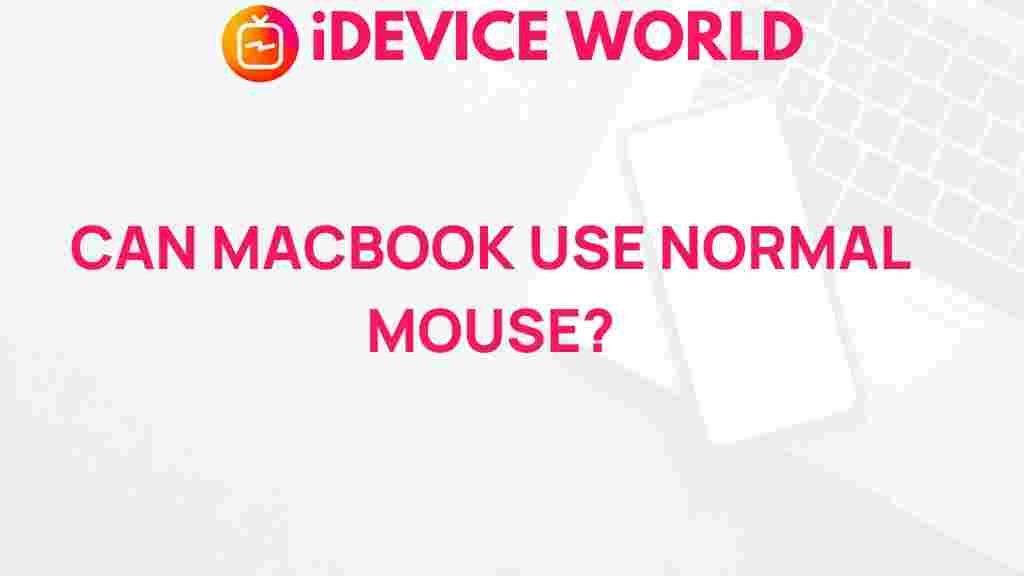Unveiling the Compatibility Mystery: Can MacBook Support Regular Mice?
In the world of technology, compatibility is often a key concern for users looking to optimize their device’s functionality. This is particularly true for MacBook users who wish to enhance their computing experience with peripherals like mice. The question arises: can a MacBook support regular mice? This article delves into the compatibility of various mouse types with MacBooks, providing you with the information you need to make informed decisions about your accessories.
Understanding MacBook Compatibility
Before diving into whether regular mice can work with MacBooks, it’s essential to understand what a MacBook is and the types of connections it offers. A MacBook is a line of Macintosh laptop computers designed and marketed by Apple Inc. They are known for their sleek design, powerful performance, and seamless integration with the macOS operating system.
MacBooks typically feature USB-C ports, which have become standard in recent models. This transition has brought about some changes in peripheral compatibility, especially regarding traditional USB mice. Let’s explore the different types of mice available and their compatibility with MacBooks.
Types of Mice and Their Compatibility with MacBooks
- Wired Mice: Most wired mice connect via USB. With the advent of USB-C ports, users might need an adapter to connect standard USB mice.
- Wireless Mice: Wireless mice can be connected via Bluetooth or a USB receiver. MacBooks readily support Bluetooth mice, making them an excellent choice for seamless connectivity.
- Gaming Mice: High-performance gaming mice may require specific drivers to function optimally. While many gaming mice work with MacBooks, it’s important to check for compatibility with macOS.
Connecting Regular Mice to Your MacBook
Now that we have an understanding of the different types of mice, let’s look at how to connect a regular mouse to your MacBook. This step-by-step process will guide you through the connection methods:
Connecting a Wired Mouse
- Check the Ports: Identify the type of USB port on your MacBook. If you have a USB-C port, ensure you have a suitable adapter for your wired mouse.
- Plug in the Mouse: Connect the mouse to the USB port using the appropriate cable or adapter.
- Test the Mouse: Move the mouse to see if the cursor responds on the screen. If it does, you’re all set!
Connecting a Wireless Mouse
- Turn on the Mouse: Ensure your wireless mouse is powered on and in pairing mode. This is usually indicated by a blinking LED light.
- Open Bluetooth Settings: Click on the Apple menu, select “System Preferences,” and then click on “Bluetooth.”
- Pair the Mouse: Locate your mouse in the list of devices. Click “Connect” to pair it with your MacBook.
- Check Connection: Once connected, move the mouse to ensure it functions correctly.
Troubleshooting Mouse Connection Issues
If you encounter issues when connecting your mouse to a MacBook, here are some troubleshooting tips to help you resolve them:
- Check Power Supply: For wireless mice, ensure the batteries are charged or replace them if necessary.
- Verify Compatibility: Confirm that your mouse is compatible with macOS. Some mice may have limited functionality or require specific drivers.
- Update macOS: Keeping your macOS updated can resolve compatibility issues with peripherals. Check for updates by clicking on the Apple menu and selecting “Software Update.”
- Reset Bluetooth: If you’re having trouble with a Bluetooth mouse, try turning Bluetooth off and on again in the Bluetooth settings.
Benefits of Using a Mouse with Your MacBook
Using a mouse with your MacBook can significantly enhance your productivity and comfort. Here are some benefits:
- Increased Precision: A mouse offers more accurate control than a trackpad, making tasks like graphic design and gaming more enjoyable.
- Ergonomic Comfort: Many mice are designed to reduce wrist strain, making them more comfortable for long periods of use.
- Enhanced Navigation: Mice provide a more intuitive way to navigate through applications and documents compared to trackpads.
Conclusion
In conclusion, the compatibility of regular mice with MacBooks is generally quite good, provided you understand the type of mouse you are using and how to connect it. Whether you choose a wired or wireless option, MacBooks can easily support various mouse types. Following the steps outlined in this article should help you set up your mouse without any issues.
If you experience persistent connectivity problems, consider reaching out for technical support or visiting the Apple Support page for further assistance. For additional resources on enhancing your MacBook experience, check out our other articles here.
Overall, integrating a regular mouse with your MacBook can enhance your computing experience, making tasks more efficient and enjoyable. Don’t hesitate to explore different mouse options to find the one that best suits your needs.
This article is in the category Guides & Tutorials and created by iDeciveWorld Team

1 thought on “Unveiling the Compatibility Mystery: Can MacBook Support Regular Mice?”